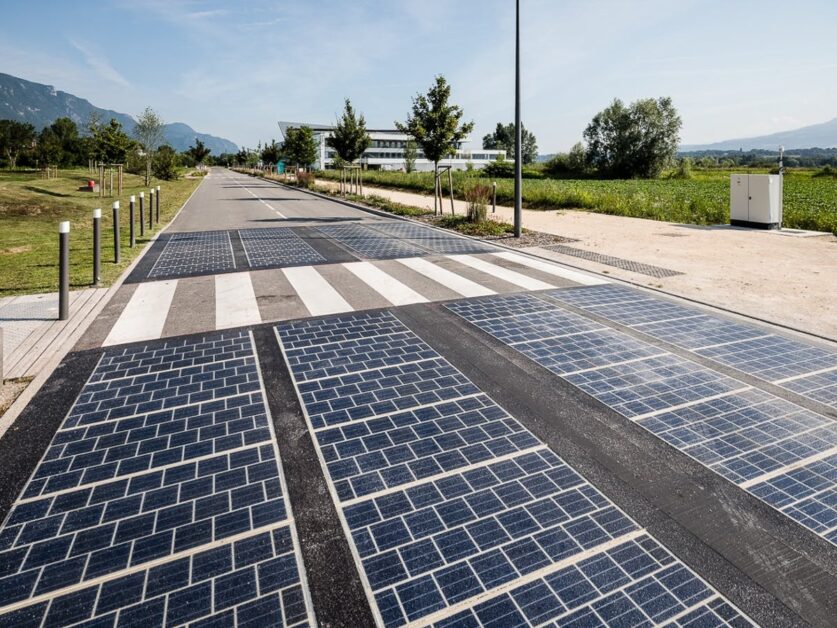The solar road is a topic that turns and turns again: some believe that technology is the key to the future of clean energy generation, while others see it only as a curiosity or an experiment that only causes harm.
After all, what is the truth?
What is a solar road and how does it work?
The concept of solar roads (or Solar Roadways, in English) is not new, it emerged a few years ago and consists of applying solar panels on roads so that they capture sunlight and convert it into clean energy for the most diverse purposes.
The photovoltaic cells of the solar panels are arranged on the roads in a kind of “sandwich”, above an insulating layer and under another layer of resin or translucent concrete (not completely transparent, but which allows light to pass through).
The idea of solar roads is to transform roads, sidewalks and parking lots, among other surfaces, into large solar panels, connected directly to the electricity grid, in the same way as a solar farm (solar power plants, with huge panels in a large area).
Are there active solar roads?
Yes. There is one currently active.
But so far, two solar roads have been created for real-world testing.

Tourouvre-au-Perche, France
The world’s first (above) was implemented at the end of 2016 in the village of Tourouvre-au-Perche, France, as part of testing the technology, and was deactivated two years later. It was 1 km long and 2,800 m² in area, cost €5 million, used ultra-resistant polymer in the coating and remained active until recently.
Designed to generate 300,000 kWh of energy, its peak energy at the beginning of the project was 150,000 kWh, dropping shortly thereafter to an average of 78,000 kWh in 2018; at the beginning of 2019, the average was already at 38,000 kWh. There was no shortage of reasons: due to the fixed position, the panels capture 30% less energy than if they were on a roof, in addition to the fact that the region receives strong sun for only about 44 days a year.
The French government was unhappy with the results of the experiment, classified by the local press as “a complete disaster”, too expensive and with too little return.
Jinan, capital of Shandong province
In December 2017, it was China’s turn (above) to implement its first solar road in Jinan, the capital of Shandong Province. The stretch is 2 km long and has a covered area of 5,755 m², with translucent concrete covering.
The cost of the work was 17,265,000 yen. The Chinese government claims the road would be capable of generating 1 million kWh in a year, although experts dispute those figures.
Is a solar road viable?
The big problem with solar roads revolves around money, both to implement the technology and return on investment. Installing solar panels on roads involves a much higher cost than using the cells on roofs or farms, given the need to use materials that are resistant to traffic and the weight of cars and, at the same time, translucent, which allows passage of light.
The energy return of solar roads, in comparison to the cost, is extremely low, mainly due to the fact that it is not possible for the panels to follow the position of the Sun. They have the best capture period only around noon; for the rest of the day, shadows significantly decrease the efficiency of the set.
In general understanding, solar roads are today nothing more than an inefficient curiosity, which needs to improve a lot to be minimally viable.
Energetically and financially speaking.
Read Also: What is the difference between solar energy on-grid and off-grid?

